Eid celebrations mark significant moments of joy, spirituality, and community bonding for Muslims worldwide. However, determining the exact day for Eid, particularly Eid al-Adha, has historically been a contentious issue, causing confusion and frustration within the Muslim community, especially in the US and Canada.
This Eid al-Adha is another year where the community is divided on the day of Eid. Notably, the moon sighting problem is not as prevalent outside the Western world.
In countries where Muslims are a minority, such as India, Sri Lanka, Fiji, and Zimbabwe, the communities tend to be more united on moon sighting without much division. However, Muslims in the West face this challenge each year, dealing with differing opinions and practices within their communities.
This blog explores the various methods used to declare Eid and provides a comprehensive discussion on the underlying reasons behind each approach, with a particular focus on the traditional moon sighting method, astronomical calculations, and Saudi moon sighting.
1. Traditional Moon Sighting: Following the Sunnah
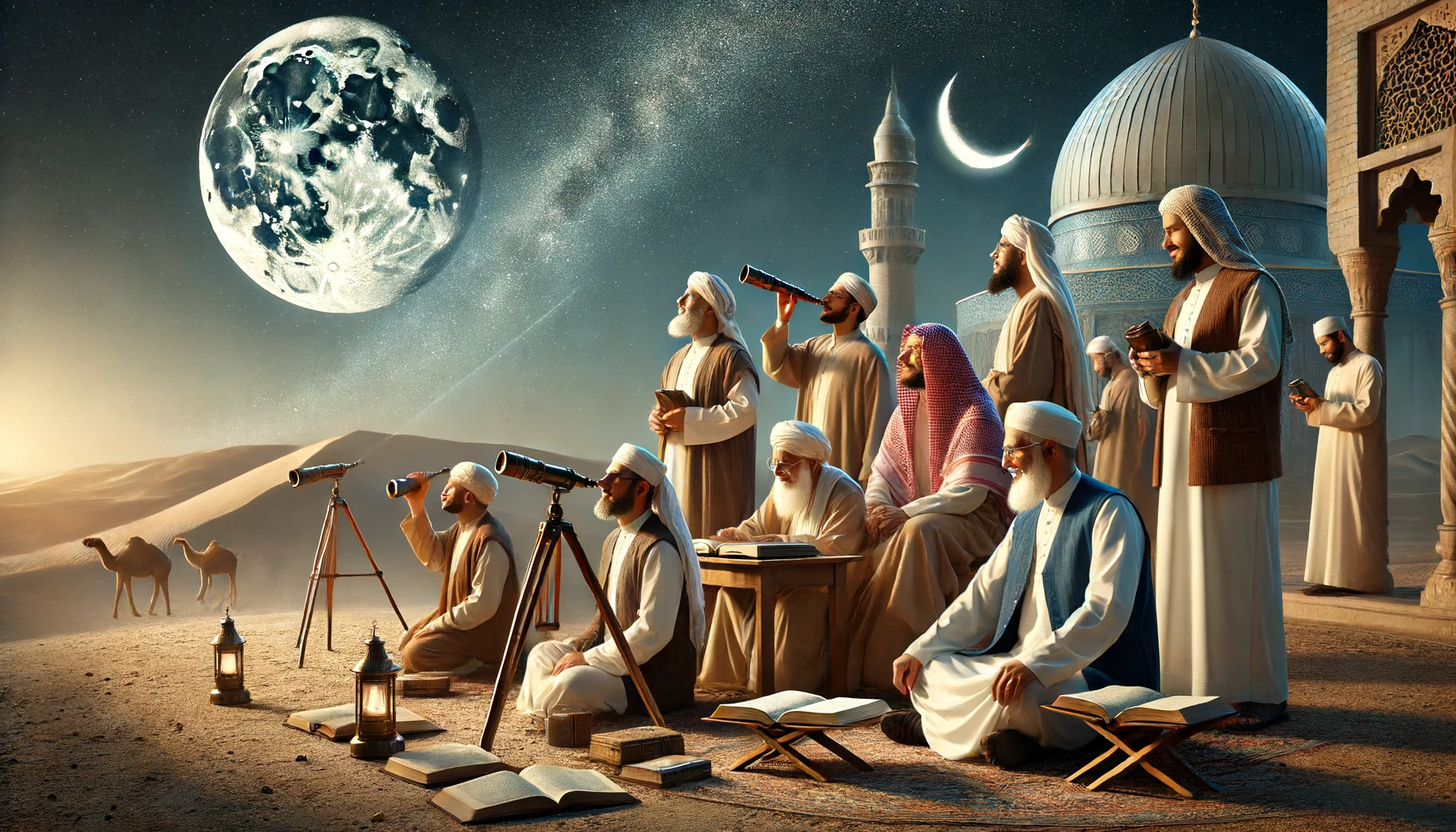
One of the most traditional methods for determining the start and end of Islamic months, including the month of Dhul-Hijjah which determines the day of Eid al-Adha, is moon sighting.
This practice is deeply rooted in the hadith of the Prophet Muhammad (peace be upon him), who instructed Muslims to begin fasting with the sighting of the moon and to celebrate Eid with the sighting of the moon.
Local vs. Global Moon Sighting:
Local Moon Sighting:
This approach involves sighting the moon within a specific region, usually covering North America and the Caribbean for Muslims in the US and Canada. This method emphasizes a more community-centric practice where Muslims rely on moon sightings within their vicinity to declare the start of the month.
Global Moon Sighting:
In contrast, global moon sightings consider moon sightings from anywhere in the world. This broader perspective allows for the possibility of a unified Islamic calendar but often leads to logistical challenges and disagreements.
Quranic and Hadith Evidence for Local Moon Sighting:
- The Quran states:
“يَسْأَلُونَكَ عَنِ الْأَهِلَّةِ ۖ قُلْ هِيَ مَوَاقِيتُ لِلنَّاسِ وَالْحَجِّ”
“They ask you about the crescent moons. Say, ‘They are measurements of time for the people and for Hajj'” (Quran 2:189).
This verse highlights the significance of the crescent moon as a marker of time for the community, emphasizing its local visibility.
- The Prophet Muhammad (peace be upon him) said:
“صُومُوا لِرُؤْيَتِهِ وَأَفْطِرُوا لِرُؤْيَتِهِ فَإِنْ غُمَّ عَلَيْكُمْ فَأَكْمِلُوا عِدَّةَ شَعْبَانَ ثَلَاثِينَ”
“Fast when you see the new moon, and break your fast when you see it. If the sky is cloudy, complete the month of Sha’ban as thirty days” (Sahih al-Bukhari, 1909).
This hadith underscores the importance of actual moon sighting by the local community to determine the beginning and end of the month.
List of prominent scholars who promote the local moon sighting method for determining Islamic dates, including Ramadan and Eid:
Mufti Taqi Usmani
A highly respected Islamic scholar from Pakistan, Mufti Taqi Usmani strongly supports local moon sighting. He emphasizes the importance of following the traditional methods prescribed by the Prophet Muhammad (peace be upon him).
His scholarly evaluation highlights the importance of local moon sighting over following a centralized declaration from another country, such as Saudi Arabia. Below is the statement from Mufti Taqi Usmani, which was published a few years ago. (Please refer to the attached document for the detailed statement).
Mufti Menk (Ismail ibn Musa Menk)
An influential Islamic scholar from Zimbabwe, Mufti Menk promotes the practice of local moon sighting and often discusses its significance in his lectures and public engagements.
Shaykh Ibn Uthaymeen
Shaykh Muhammad ibn Salih al-Uthaymeen, a renowned Saudi Islamic scholar, has provided significant support for the practice of local moon sighting. In his fatwas and lectures, Shaykh Ibn Uthaymeen emphasized the importance of following local moon sighting to determine the beginning of Ramadan and the celebration of Eid.
He argued that Islamic jurisprudence supports local sightings and that it is not obligatory for Muslims to follow moon sighting declarations from distant regions or other countries. This perspective reinforces the view that maintaining local practices ensures the authenticity and accuracy of Islamic observances.
Shaykh bin Baz
Shaykh Abdul Aziz bin Abdullah bin Baz, the former Grand Mufti of Saudi Arabia, also advocated for the legitimacy of local moon sighting.
Shaykh Ibn Baz issued fatwas stating that it is permissible for Muslim communities to rely on their own moon sightings rather than adhering strictly to sightings reported from other regions, including Saudi Arabia.
His scholarly position highlighted that unity in the Muslim community can be maintained through local moon sighting practices, as this approach aligns with the Sunnah and the principles of Islamic jurisprudence. Shaykh Ibn Baz’s support for local moon sighting underscores the flexibility and contextual understanding inherent in Islamic legal traditions.
Sheikh Ebrahim Desai
A respected Islamic scholar from South Africa, Sheikh Ebrahim Desai advocates for local moon sighting and has provided numerous rulings and explanations on this practice through his platform Askimam.
Sheikh Haitham Al-Haddad
A prominent Islamic scholar in the UK, Sheikh Haitham Al-Haddad strongly supports local moon sighting. He has written and lectured extensively on the importance of adhering to this method and has provided detailed clarifications on the issue through various platforms.
Sheikh Hamza Yusuf
A co-founder of Zaytuna College in Berkeley, California, Sheikh Hamza Yusuf has spoken about the issue of moon sighting, highlighting the reduction of confusion and conflict within the Muslim community in his book. As per Shaykh Hamza, the sacred practice of moon sighting is one that is deeply rooted in the Islamic tradition. In this scholarly essay, Shaykh Hamza Yusuf skillfully explains the importance of this timeless Prophetic practice and how its abandonment has led to much of the confusion and discord we face today in establishing the lunar calendar. This is essential reading for those who seek clarity on this important matter.
Caesarean Moon Births: Calculations, Moon Sighting, and the Prophetic Way
Below are the translations of the fatawa/letters written in the past by Mufti Taqi Usmani and Shaykh Uthaymeen on the topic.
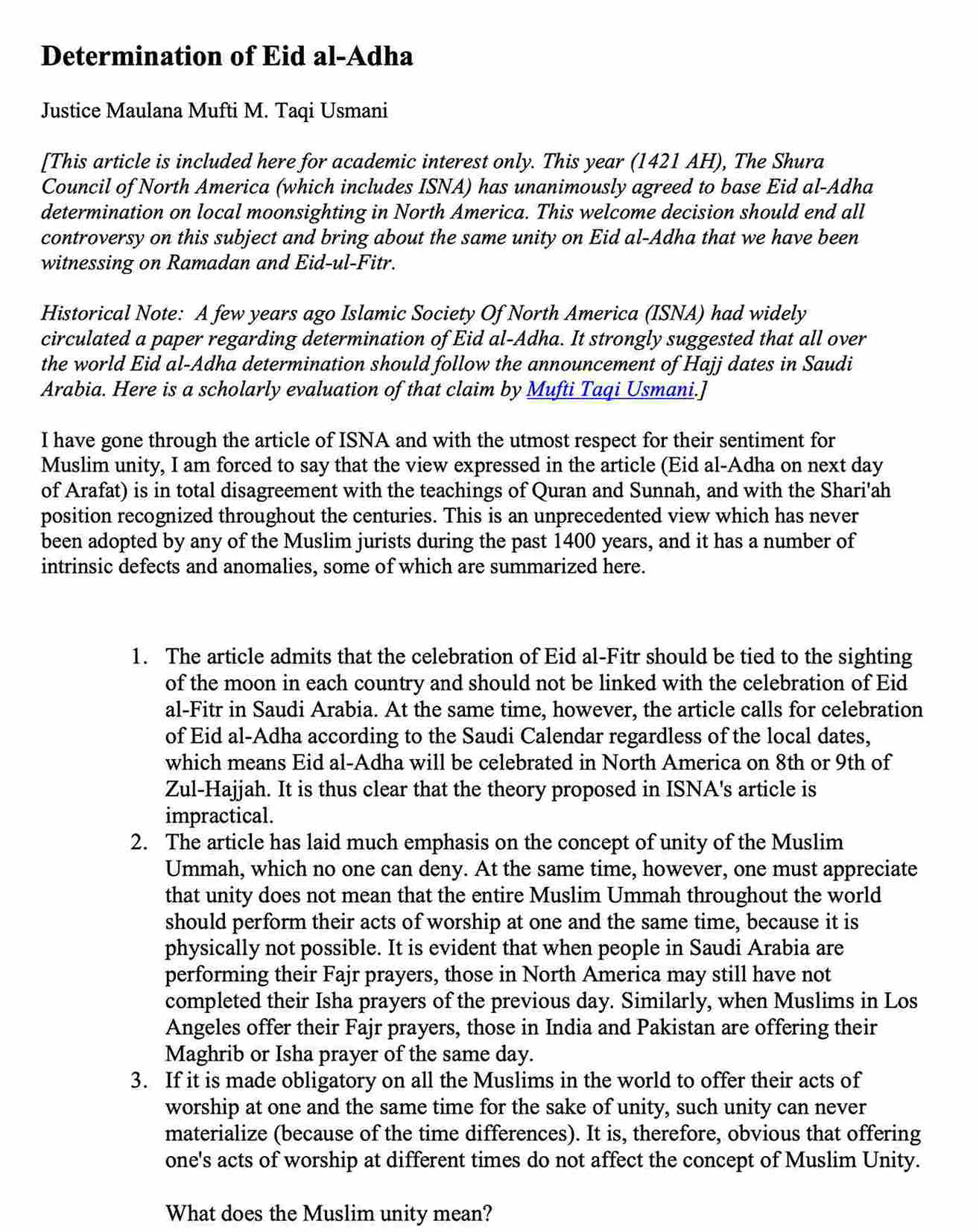
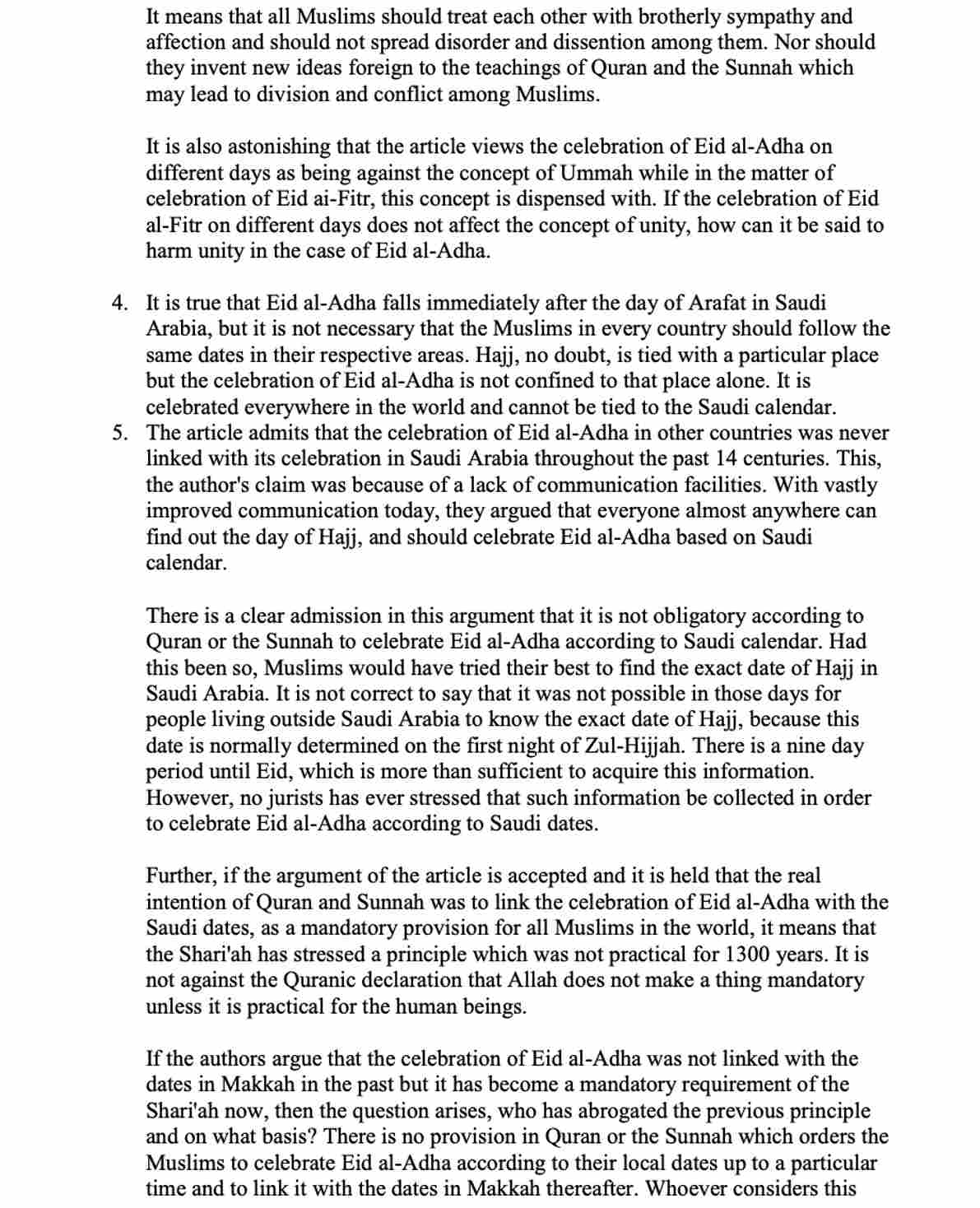
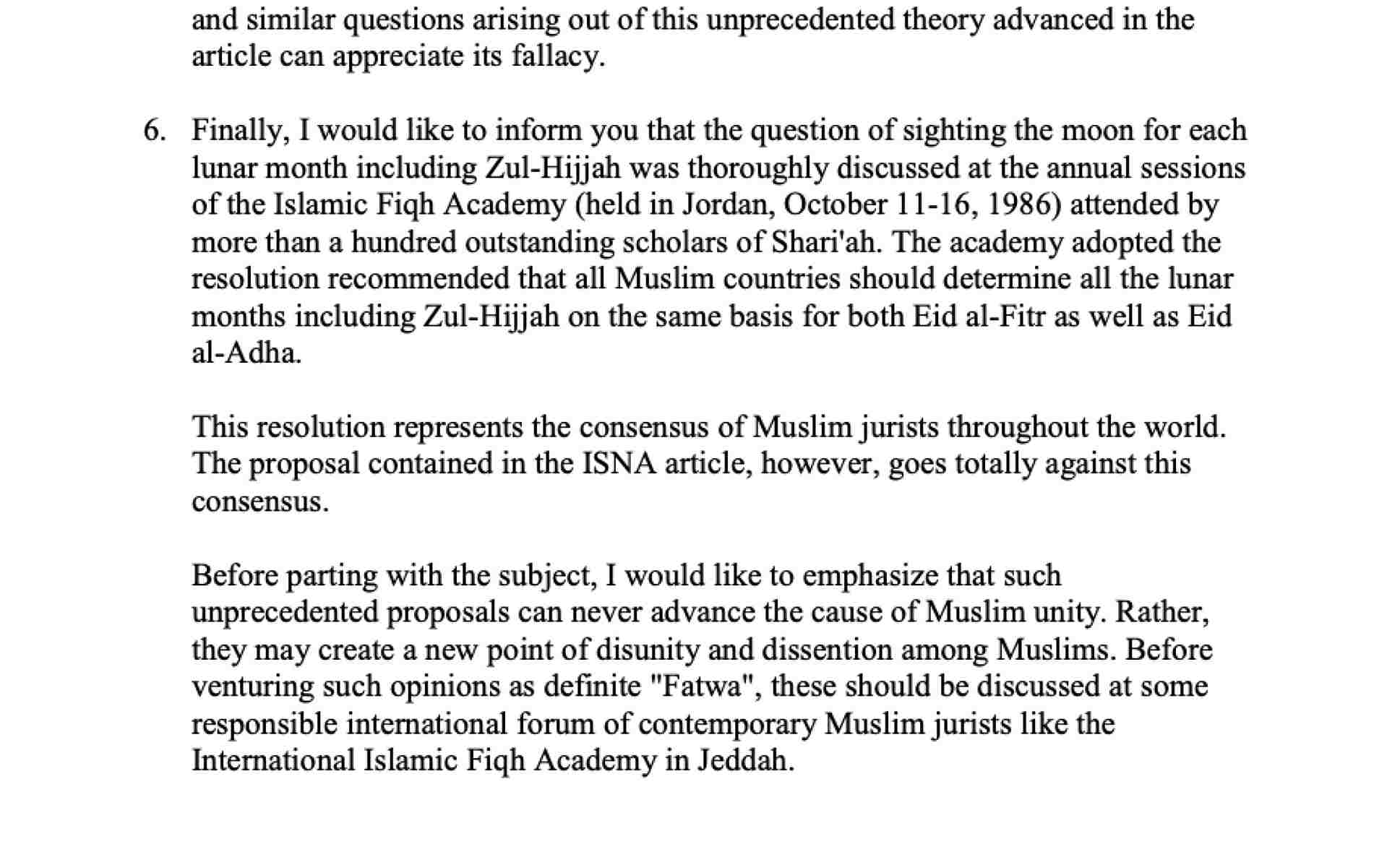
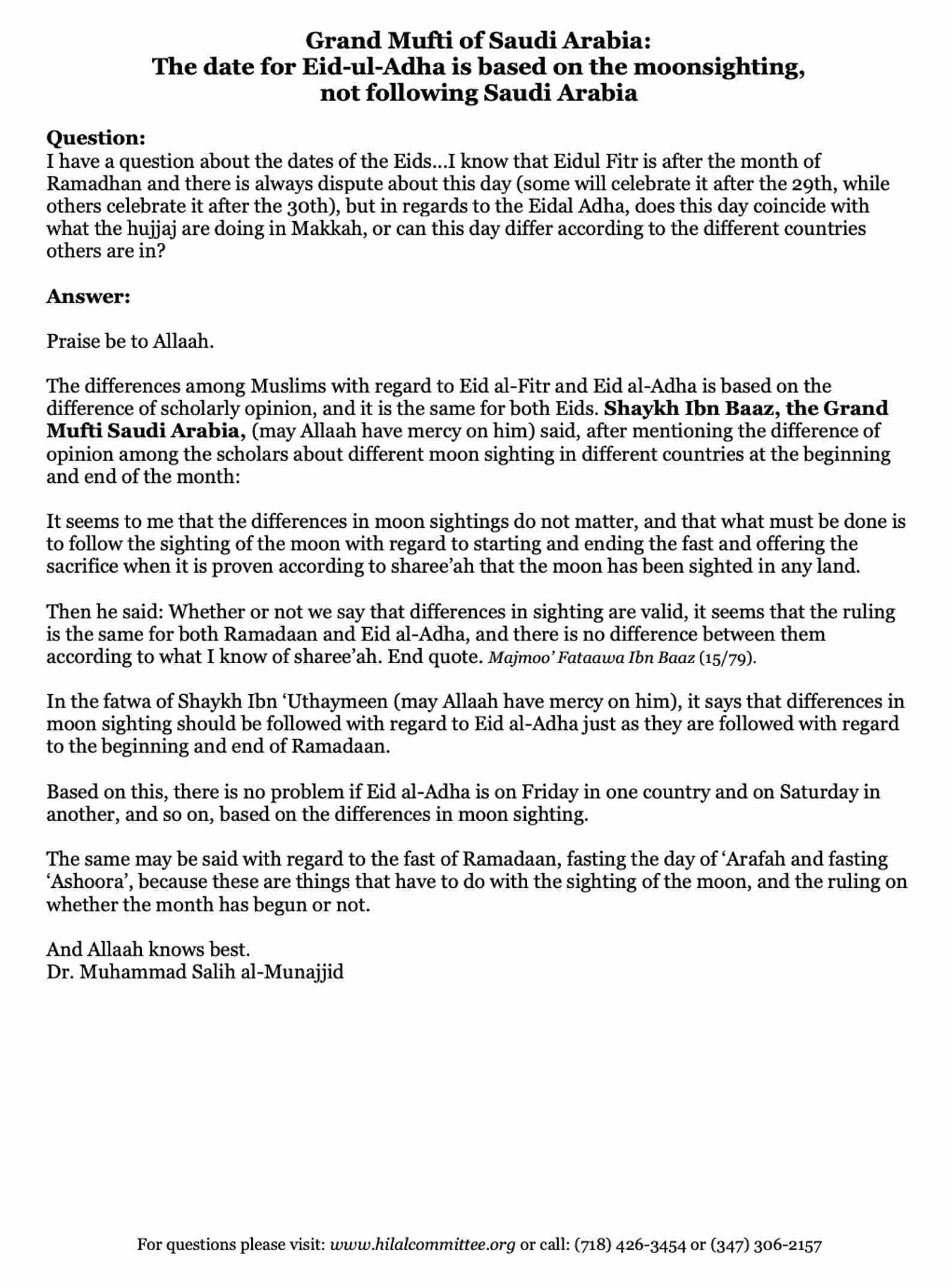
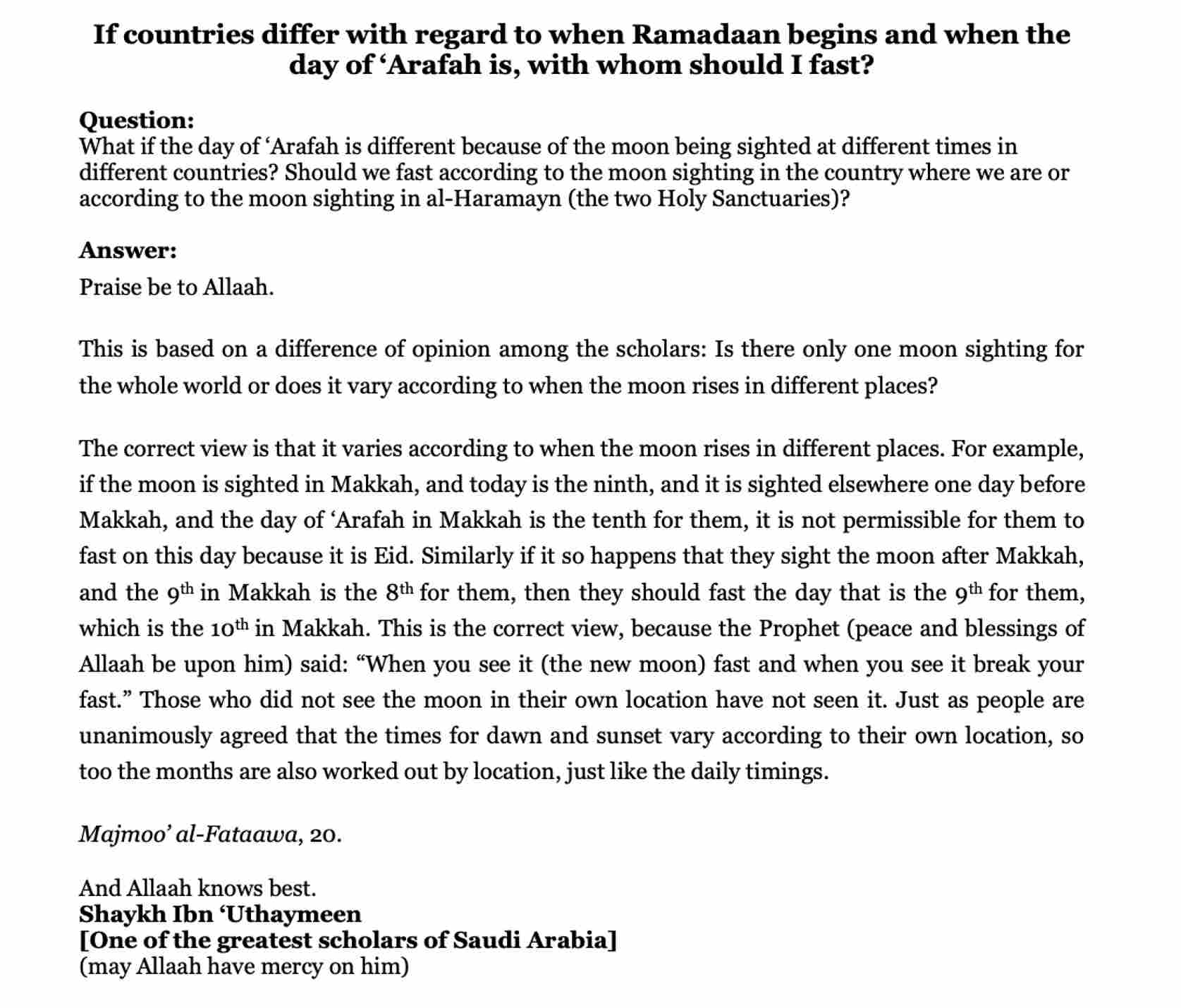
2. Calculations: Position and Counter Arguments
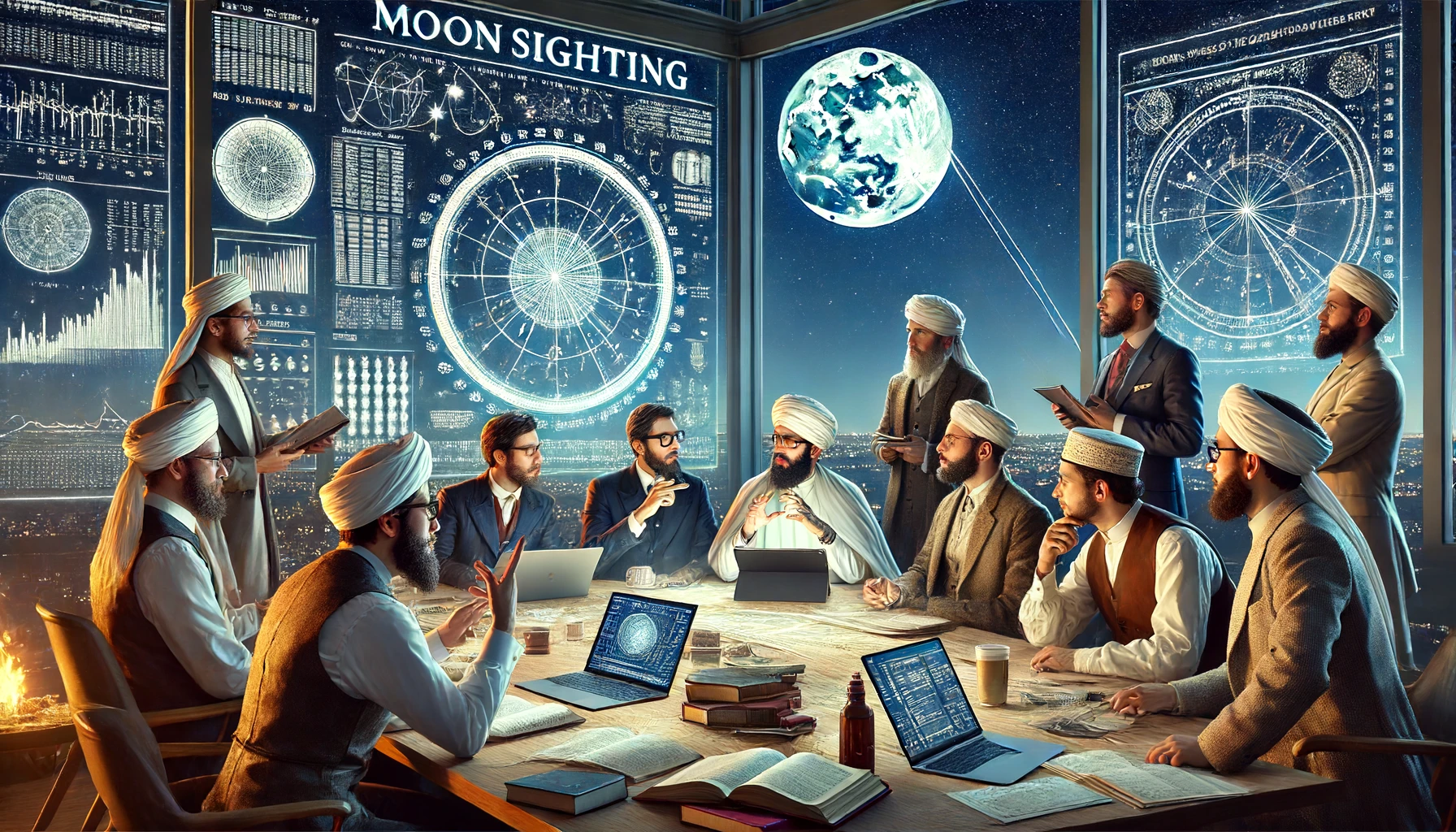
A more recent approach, particularly gaining traction in Western countries, is the use of astronomical calculations to determine the moon’s sighting.
This method leverages technological advancements to predict the moon’s birth with a high degree of accuracy.
Position on Calculations:
- Historical Context:
During the time of the Prophet Muhammad (peace be upon him), naked-eye sighting was the only available method. The Prophet’s instruction to use moon sighting was based on the technological limitations of his era.
ISNA argues that the intent was to observe the moon, which modern astronomy can achieve with greater precision.
- Scientific Endorsement:
The Quran encourages the observation of celestial bodies: “It is He who made the sun a shining light and the moon a derived light and determined for it phases” (Quran 10:5). This verse supports using modern scientific methods to observe the moon’s phases
- Practical Benefits:
Astronomical calculations allow for better planning and organization of religious activities, especially in non-Muslim majority countries. This method reduces uncertainty and facilitates easier observance of religious duties.
Here is the list of Scholars/Personalities that promote the calculation method for determining Islamic dates, including Ramadan and Eid:
Shaykh Yasir Qadhi
An influential Islamic scholar and academic, Shaykh Yasir Qadhi is known for his support of the calculation method. He argues that the precision and reliability of astronomical calculations provide a practical and consistent way to determine Islamic dates.
Source: Shaykh Yasir Qadhi’s Facebook post
Dr. Zulfiqar Ali Shah
A prominent Islamic scholar and the Executive Director of the Fiqh Council of North America (FCNA), Dr. Zulfiqar Ali Shah advocates for the use of astronomical calculations.
He believes that this method aligns with the spirit of the Shariah by providing clarity and avoiding unnecessary disputes.
Source: Fiqh Council of North America
Dr. Muzammil Siddiqi
The former president of ISNA and an influential Islamic scholar, Dr. Muzammil Siddiqi supports the calculation method for moon sighting. He emphasizes the importance of utilizing modern scientific advancements to aid in religious observances.
Source: Islamic Society of North America
Dr. Salah Soltan
An Egyptian Islamic scholar and a member of the European Council for Fatwa and Research, Dr. Salah Soltan supports the calculation method, advocating for its accuracy and practicality in determining Islamic dates.
Source: European Council for Fatwa and Research
Counterarguments to Calculations:
Despite the practical advantages of using calculations, several counterarguments challenge this approach:
1. The Prophetic Tradition Emphasizes Physical Moon Sighting:
The Prophet Muhammad (peace be upon him) explicitly instructed the Muslim community to rely on physical moon sightings to determine the start and end of Ramadan (Sahih al-Bukhari 1909, Sahih Muslim 1080). This practice is an integral part of the Sunnah.
2. Rejection of Calculations in Classical Scholarship:
Classical Islamic scholars have historically rejected using astronomical calculations for determining Islamic dates. Prominent scholars like Imam An-Nawawi and Ibn Taymiyyah emphasized that moon sighting should be accessible to all Muslims without relying on specialized knowledge (Al-Majmu`, Vol. 6, 276; Majmu’ al-Fatawa, Vol. 25, 207).
3. No Clear Distinction in Early Islamic Practice:
During the Prophet’s time, astronomy and astrology were not distinct, but were not encouraged. The early Muslim community consistently practiced visual moon sighting without resorting to calculations.
4. Potential Inaccuracies and Lack of Consensus:
There is no unanimous agreement among contemporary scholars on the use of calculations. The traditional method of moon sighting is clear and straightforward, whereas the adoption of calculations has led to further division and controversy within the Muslim community.
3. Following Saudi Arabia Moon Sighting, Position and Its Counterarguments
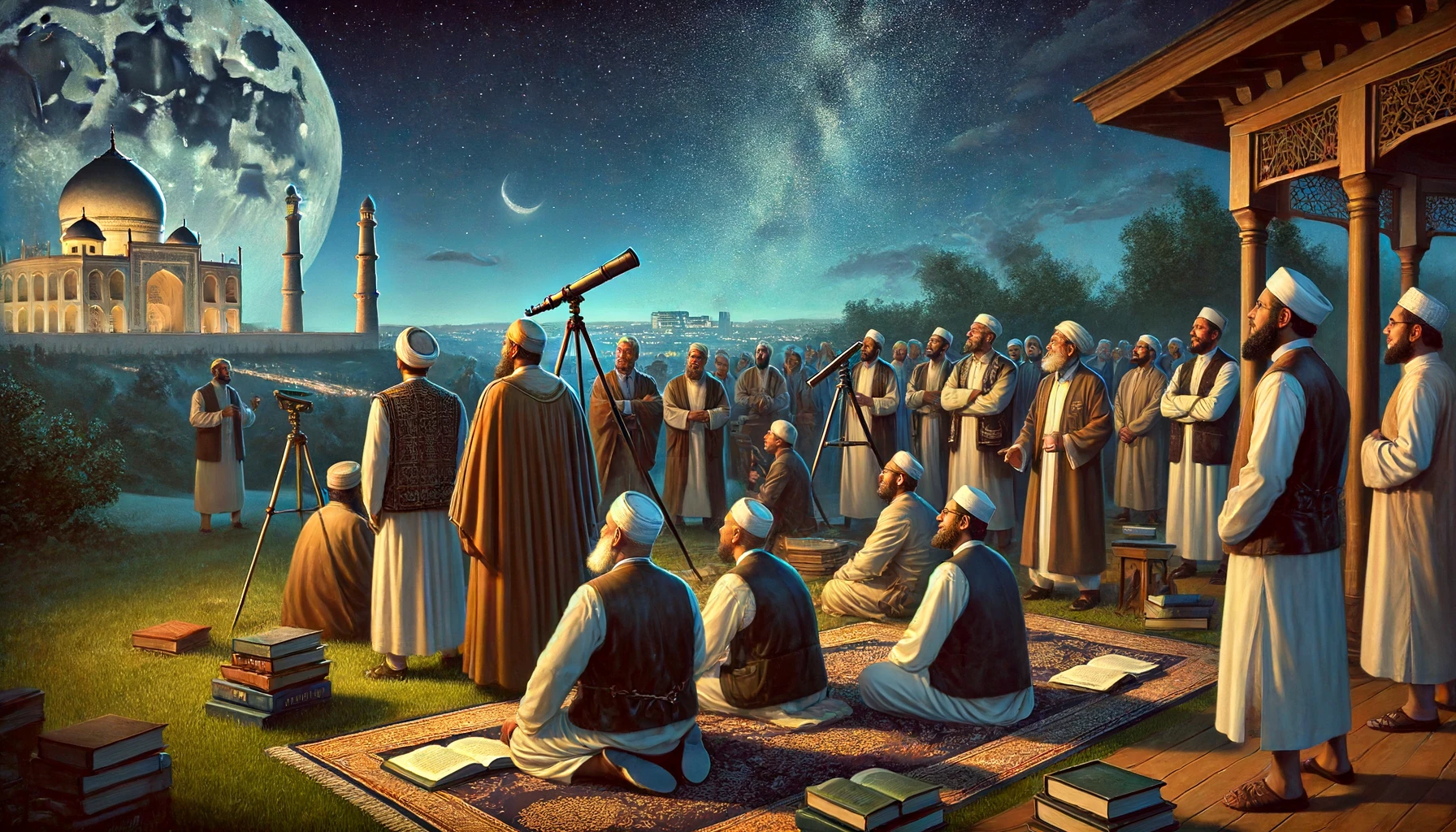
The Assembly of Muslim Jurists of America (AMJA) supports following Saudi Arabia’s moon sighting for Eid celebrations, citing unity and historical practices. However, several counterarguments challenge this stance:
Position of AMJA:
1. Unity of the Ummah:
AMJA argues that unity in significant religious practices, such as Eid al-Adha, is crucial for the cohesion of the Muslim community. Following a single, authoritative declaration helps prevent division and fosters a sense of solidarity among Muslims worldwide.
2. Historical Practice:
AMJA emphasizes that the historical practice among the majority of scholars has been to follow moon sightings without considering regional differences. This practice aligns with the objective of creating harmony and agreement within the Muslim community.
3. Practical Considerations:
In the context of a globalized world where news can travel instantly, AMJA believes that the rationale for regional moon sightings is less compelling.
The organization argues that following a unified declaration, such as that from Saudi Arabia, simplifies the process and reduces confusion.
Counterarguments Against AMJA:
1. Historical Inaccuracy and Flaws in Saudi Moon Sighting:
Saudi Arabia has made multiple errors in moon sighting declarations. For example, in 2011, Saudi authorities announced Eid al-Fitr based on an incorrect moon sighting, which was later corrected.
These repeated inaccuracies undermine the credibility of relying solely on Saudi moon sightings for global unity.
The Supreme Court of Saudi Arabia had called upon Muslims to sight the crescent moon on June 6, 2024, and subsequently confirmed the sighting, marking the beginning of Dhul Hijjah and setting the dates for Eid al-Adha. However, astronomical predictions indicated that the moon’s position would make it impossible to be sighted on that date, which has led to further doubts and concerns within the global Muslim community. Below is the visibility map on June 6th 2024.
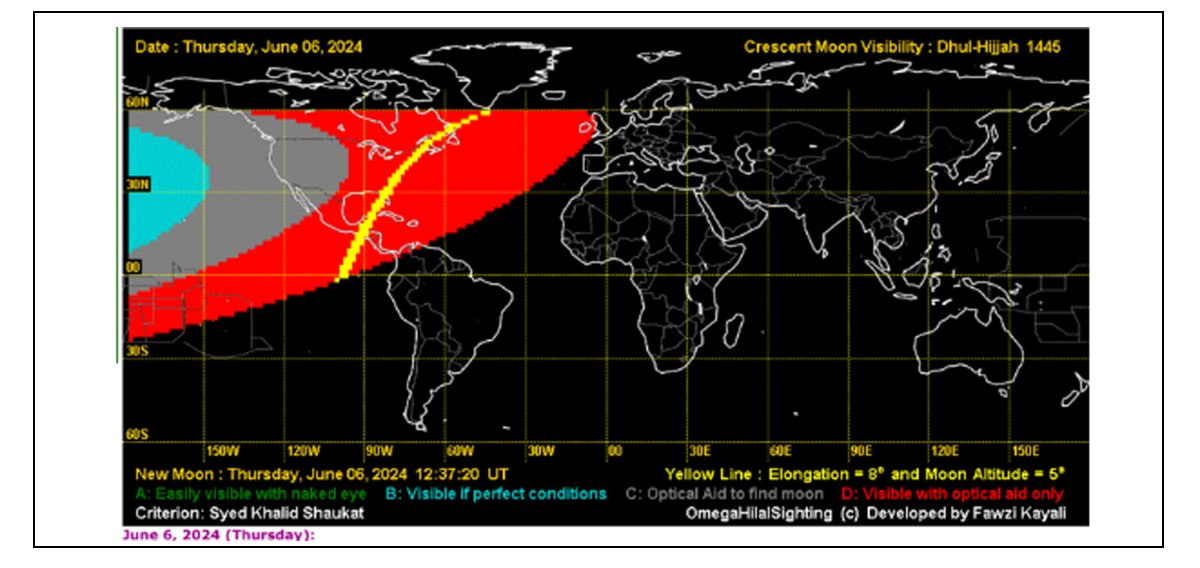
2. Saudi Authorities’ Stance on Global Moon Sighting Responsibility:
Saudi authorities do not assume responsibility for global moon sighting. They primarily focus on local sighting for their region.
This lack of global accountability questions the validity of using Saudi declarations as a basis for worldwide observance of Islamic events.
Youtube Video of Saudi Scholar on views of moonsighting:
3. Resistance to Saudi Authority in the Muslim World:
Many Muslims worldwide view the Saudi government as having policies and actions contrary to Islamic interests. This sentiment is echoed in criticisms of Saudi involvement in regional conflicts and their approach to Islamic governance.
Forcing the global Muslim ummah to follow Saudi moon sightings can be seen as imposing political authority rather than a religious consensus, which many Muslims oppose.
4. Unfounded Basis for Unifying Around Saudi Arabia Instead of the Sunnah:
Unifying the Muslim ummah should be based on adherence to the Sunnah and authentic Islamic practices rather than political alignment with a specific country.
The Sunnah of moon sighting, as practiced by the Prophet Muhammad (peace be upon him), emphasizes local sighting, which aligns with the hadith: “Fast when you see the new moon, and break your fast when you see it” (Sahih al-Bukhari, 1909).
5. Lack of Influence and Verification by AMJA Scholars:
AMJA and its scholars reportedly do not have direct influence or involvement in verifying moon sightings or obtaining shahada (testimony) from Saudi authorities. Despite this, they insist on following Saudi declarations for the sake of unity.
This reliance without direct verification raises concerns about the accuracy and religious validity of their stance.
Conclusion: Seeking Unity Through Adherence to the Sunnah
The ongoing debate over moon sighting methods reflects the broader challenge of maintaining unity within the diverse Muslim community. While astronomical calculations offer practical benefits, the traditional practice of physical moon sighting remains deeply rooted in the Quran and Sunnah.
The guidance provided by the majority of scholars is to follow local scholars and masjids that adhere to the teachings of the Quran and Sunnah, working towards unifying the community and breaking cultural and language barriers. Many issues unite the community, and the focus should be on those, leaving the technicalities of moon sighting to scholars and community leaders.
By prioritizing the Sunnah and established practices, Muslims can preserve the integrity of their worship and strengthen community bonds. Understanding and respecting different methodologies, while striving for common ground, is essential for achieving true unity and harmony in celebrating Islamic occasions.
The Broader Perspective on Unity
Moon sighting is not the scale on which you measure whether the Ummah is unified or not. Even during the Prophet’s time, it was expected that people would sight the moon on different days because Islam had spread across many nations and geographical locations. As a result, it was expected that based on visibility in different locations, Ramadan or Eid would begin on different days. This geographical diversity inherently led to variations in moon sighting and the start of Islamic months.
Far more important than having a unified Eid date is to be united in standing up for atrocities against the Ummah regardless of geography. The Muslim community should be a unified voice in working towards establishing the principles of justice in our communities. Rejecting the ideas of liberal anti-Islamic family structures with one voice and reducing political and ethnic tensions within the Muslim community are crucial goals that far outweigh the need for a single Eid date.
True unity in the Muslim community involves collective efforts in promoting social justice, supporting the oppressed, and adhering to the core values of Islam. This unity transcends the technicalities of moon sighting and focuses on the broader objectives of solidarity, justice, and mutual support.
By embracing these principles, Muslims can create a stronger, more cohesive community that reflects the true essence of Islamic teachings. The emphasis should be on the collective adherence to the Quran and Sunnah, working together to address the significant challenges facing the Ummah today.
*Disclaimer
The views and opinions expressed in this blog are those of the author and do not necessarily reflect the official policy or position of Muslim Directory.
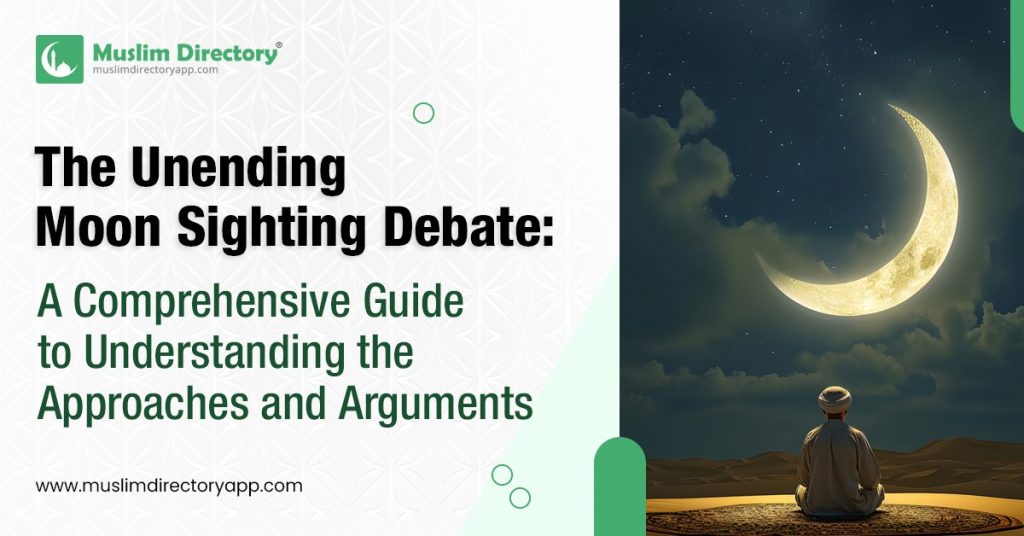











Zakir
Saudi Arabia has made multiple errors in moon sighting declarations. For example, in 2011, Saudi authorities announced Eid al-Fitr based on an incorrect moon sighting, which was later corrected.